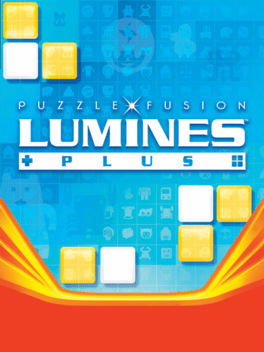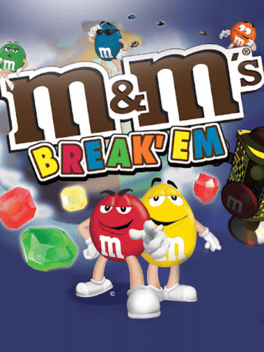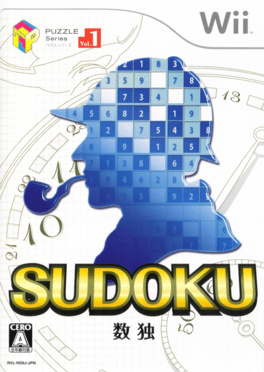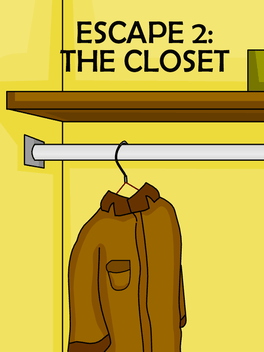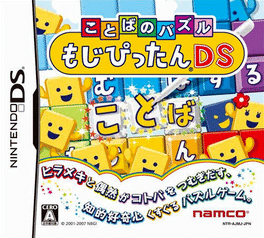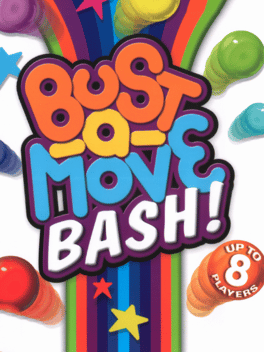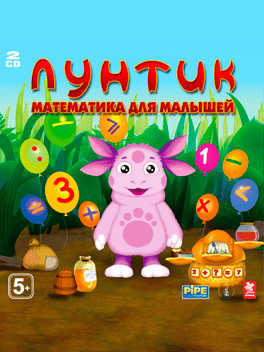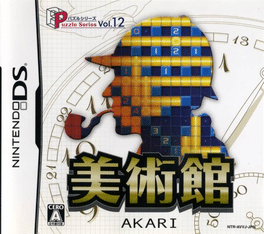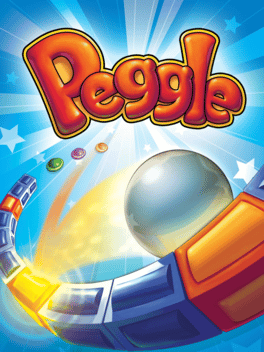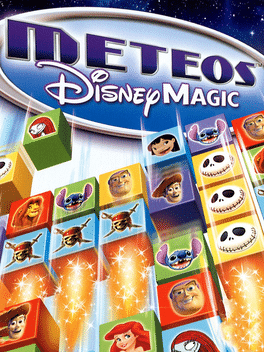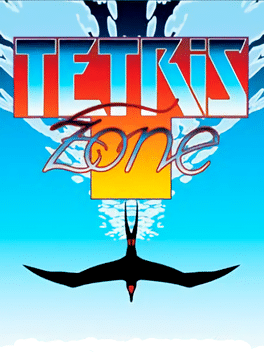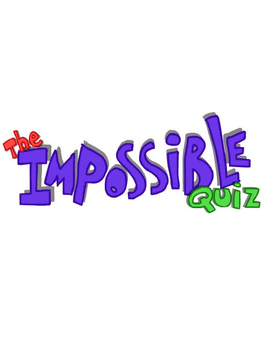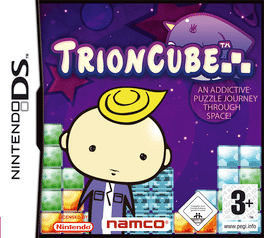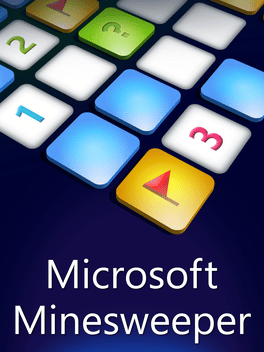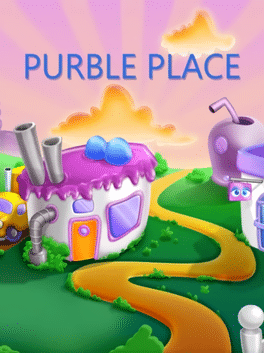New Ps3 Games - Page 234
-
Lumines Plus
2007
Lumines Plus
2007
star 7Lumines Plus is the home console port of Lumines: Puzzle Fusion and Lumines II. This release brings puzzles from both games into one package. -
M&M's Break 'Em
2007
M&M's Break 'Em
2007
Mr. Runch, a rotten and dangerous peanut, fiercely determined on being one of the M&M's, just escaped the reject bin where he was discarded as ghastly! He's on the loose in the Galaxy, and trying to kidnap and trap all of the M&M's into crystals until he can get what he wants: the chance to become a real M&M's candy! -
Puzzle Series Vol. 1: Sudoku
2007
"Sudoku", which is a hot topic all over the world, is finally coming to Wii. It is also interesting to play by choosing from 4 difficulty levels by yourself, and to challenge how many questions you can clear within the time limit. In addition, you can register up to 100 questions, so you can copy the questions in the newspaper and play with them, or you can create your own original questions. In addition, the two-player battle mode is also fulfilling. In "Point Battle", you can use the item panel, and you can play while bargaining, such as "chain" and "quick placement". In "speed battle", you compete for which one has cleared many problems in the same time. Of course, there is plenty of support for beginners. You can proceed while learning the rules in the hands-on tutorial. -
Escape 2: The Closet
2007
Escape 2: The Closet
2007
In this point and click adventure game, explore every inch of the closet in an attempt to find anything that might help you escape. Every item and every clue will have some kind of use, and it’s up to you to discover just what this use is, and how exactly to go about solving the game’s puzzles in your attempt to escape the closet. -
Drake & Josh
2007
Drake & Josh
2007
The Drake & Josh videogame follows the lives of two very different step-brothers and their crazy adventures with school, girls and their crafty sister Megan. In the game, players interact with all of their favorite characters from the show, including Drake and Josh, in a variety of modes featuring problem solving, stealth, strategy and action-style gameplay. -
Bust-A-Move Bash!
2007
Bust-A-Move Bash!
2007
star 4.6The non-stop puzzle action of Bust-A-Move is now on your Nintendo Wii! Old favorites Bub and Bob return with some new friends and game modes designed to take advantage of your Wii Remote. Face an all angle assault of bubbles in Shooting Mode, play up to 7 friends in VS. Mode, test your endurance in Endless Mode, or enjoy the classic Puzzle Mode from previous iterations of the franchise. If you're just discovering the challenging puzzle action, or are a returning expert bubble launcher, you'll be sure to find loads of bubble bursting fun in Bust-A-Move Bash! -
Luntik: Matematika dlya malishey
2007
The project of the series "Luntik. Preparing for School", which includes five educational games for children aged 5-7. This is a children's educational computer game about Luntik - a character from the cartoon of the same name. Traveling through a wonderful fairy-tale world with Luntik and his friends, little players will learn to perform basic arithmetic operations - add, subtract and compare numbers, as well as tell time on the clock. Fun mini-games and meetings with the heroes of their favorite cartoon in new funny situations await the little ones. -
Puzzle Series Vol. 12: Akari
2007
Puzzle Series Vol. 12: Akari is a Puzzle game published by Hudson Soft released on March 8, 2007 for the Nintendo DS. -
Peggle Deluxe
2007
Peggle Deluxe
2007
star 7.7Take your best shot with energizing arcade fun! Aim, shoot, clear the orange pegs, then sit back and cheer as 10 whimsical teachers guide you to Peggle greatness. Conquer 55 fanciful levels with 10 mystical Magic Powers, racking up bonus points and shots you'll smile about for weeks. Face off against your friends in Duel Mode, or tackle 75 extra-tricky challenges. It's luck and skill and joyous thrills, and amidst all this fevered action only one question remains: Can you become a Peggle Master? -
Peggle
2007
Peggle
2007
Windows Mobile BlackBerry OS Zeebo PlayStation 3 Android PC (Microsoft Windows) iOS Mac PlayStation Portable Xbox 360 Legacy Mobile Devicestar 8Take your best shot with energizing arcade fun! Aim, shoot, clear the orange pegs, then sit back and cheer as 10 whimsical teachers guide you to Peggle greatness. Conquer 55 fanciful levels with 10 mystical Magic Powers, racking up bonus points and shots you'll smile about for weeks. Face off against your friends in Duel Mode, or tackle 75 extra-tricky challenges. It's luck and skill and joyous thrills, and amidst all this fevered action only one question remains: Can you become a Peggle Master? -
Meteos: Disney Magic
2007
Meteos: Disney Magic
2007
star 6.7The follow-up to one of the most critically-acclaimed Nintendo DS games to date, Meteos: Disney Magic combines the superb puzzle gameplay of the original version with beloved Disney brands. Featuring an original story within the classic Disney universe, players will be asked to help Jiminy Cricket and Tinker Bell in their quest to re-organize the famous Disney storybook vault after someone accidentally changed the stories. -
Sudoku: Tied Up & Bound
2007
Sudoku: Tied Up & Bound is an adult PC version of Sudoku. The game plays like a regular game of Sudoku, however as you go on the board reveals more adult bondage imagery as it goes on. -
Tetris Zone
2007
-
The Impossible Quiz
2007
The Impossible Quiz
2007
star 5.7See how many questions you can answer before it's Game Over. Sounds simple? Think again... the questions are BASTARD hard and require obscure insane logic, super fast reactions or just pure luck to answer correctly. It's not actually impossible though, just really really hard. GOOD LUCK! Mwahahah! :p -
Trioncube
2007
Trioncube
2007
star 5.3In Trioncube, the player must embark on a journey across eight planets into the depths of space, as the captain of the mighty space ship Penko, to rescue the princess from the grasp of Hell Metal. Players reach this goal by creating a Trioncube - a series of 3x3 blocks, which start a chain reaction that refuels the space ship. -
Son of the Lion King
2007
Son of the Lion King
2007
In the jungle everything is as usual. The old lion is a good and wise king, and the animals follow his advice. Only Robin the King's little son doesn't always listen. Robin wants to find the treasure of the Black Panther but his father has forbidden him to look for it. Keno the son of the Black Panther wants to find the treasure as well. Robin and Keno start out as enemies but end up as best friends. -
Microsoft Minesweeper
2007
star 5A remake of the original Microsoft Minesweeper bundled in Windows Vista and Windows 7. -
Purble Place
2007
Purble Place
2007
star 4.3Purble Place is a minigame collection aimed at young children; the game comes pre-installed on both Windows Vista and Windows 7 systems. The three minigames included with Purble Place are: - Comfy Cakes - This involves the user pressing the correct sequence of buttons to create the cake displayed by the game. - Purble Shop - This involves the user selecting different facial features and trying to find the correct ones to recreate the animated character correctly. - Purble Pairs - This requires the user to match up different tiles of the same type. -
Brain Booster
2007
